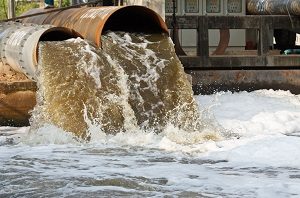Water pollution project considers the issue of water pollution with its causes, effects, and solutions. The project presents the problem of the contamination of lakes, waterways, seas, groundwater. This process directly or indirectly impacted by discharged pollutants into water bodies. The inappropriate treatment of toxic compounds removal expands the scales of contamination. Water pollution project explains that pollution harms the water biosphere and negatively affect organisms living in these bodies of water. The consequence is degeneration of individual species with the extinction of the entire population. The solution to the case remains a complex issue in the modernity.
 The specific pollutants which cause contamination include various chemicals and pathogens. Environmental changes, raised temperature and discoloration have a disastrous impact on the lakes. Chemicals as calcium, sodium, iron or manganese are naturally transpiring into water. The concentration of elements determines a natural composition of water, meanwhile, high concentrations of various elements cause a negative impact on water plants and fauna. Oxygen-depleting materials are natural substances as plant material anthropogenic chemicals. However, natural substances create turbidity which blocks radiation and disrupts plant germination.
The specific pollutants which cause contamination include various chemicals and pathogens. Environmental changes, raised temperature and discoloration have a disastrous impact on the lakes. Chemicals as calcium, sodium, iron or manganese are naturally transpiring into water. The concentration of elements determines a natural composition of water, meanwhile, high concentrations of various elements cause a negative impact on water plants and fauna. Oxygen-depleting materials are natural substances as plant material anthropogenic chemicals. However, natural substances create turbidity which blocks radiation and disrupts plant germination.
The chemical substances that discharge factories or plants are toxic. Pathogens cause waterborne diseases that affect human health. The change of water’s chemistry involves acidity, temperature, electrical conductivity, and eutrophication. Eutrophication is an increase in the concentration of biogenous elements in an ecosystem. This process changes the productivity of the ecosystem. The consequences of eutrophication have various negative environmental effects. Oxygen depletion and drastic reductions in water quality decrease fish and animal populations in water bodies. Resolutions on the control of wastes must consider all the technical factors that produce it. This arrangement should prevent further pollution or any possible harm to the ecosystem. It is important to estimate the disposal including the use of wastewater. In urban areas, domestic sewage is utilized by centralized plants. These systems remove 90 percent of the pollutant contents in sewage. Plants have installed systems to exclude toxic elements with pathogens.
Environmental experts admit that the efficient approach to reduce pollution is the establishment of polluter pays principle. This law suggests that polluters have to pay to utilize wastes and preserve the environment. Polluter pays should be operated in all kinds of activity. It suggests that tanker owners should pay insurance that covers the cost of the oil spill. In addition, customers should have to pay for synthetic grocery bags. This requirement is common in Ireland. The system encourages recycling and minimizes amounts of waste. Also, factories that use rivers must install refining water pipes.
There are various ways to manage and prevent water pollution. The additional taxation is a common arrangement that contributes to the restoration of water bodies. There have to be the laws with standards that can effectively control the amount of waste as well as the set of social and educational programs that provide necessary information about water pollution and its causes. It is important to aware society of the exhaustion of water resources. The donation system and organizations can provide a prominent assistant to the resolution of polluted water. The economic arrangments have a direct impact on the utilization water. The establishment of quotas and manufacturing can improve the issue.
Consequently, with a rapid urbanization and industrialization, the water pollution concern becomes a global issue. It necessitates the intervention of international organizations to revise the current situation. The politics should present a valid way to minimize the made harm to the world ocean and implement the special measures to prevent the pollution in future.
References
- Society, N. (2016). National Geographic Freshwater 101: Pollution. National Geographic.Retrieved 21 September 2016, from http://environment.nationalgeographic.com/environment/freshwater/pollution/
- Sources and Causes of Water Pollution – Conserve Energy Future. (2013). Conserve-Energy-Future. Retrieved 21 September 2016, from http://www.conserve-energy-future.com/sources-and-causes-of-water-pollution.php
- Water Pollution. (2016). Wwf.panda.org. Retrieved 21 September 2016, from http://wwf.panda.org/about_our_earth/teacher_resources/webfieldtrips/water_pollution/
- Water Pollution. (2016). NRDC. Retrieved 21 September 2016, from https://www.nrdc.org/issues/water-pollution
- Water Pollution Guide. (2016). Water-pollution.org.uk. Retrieved 21 September 2016, from http://www.water-pollution.org.uk/